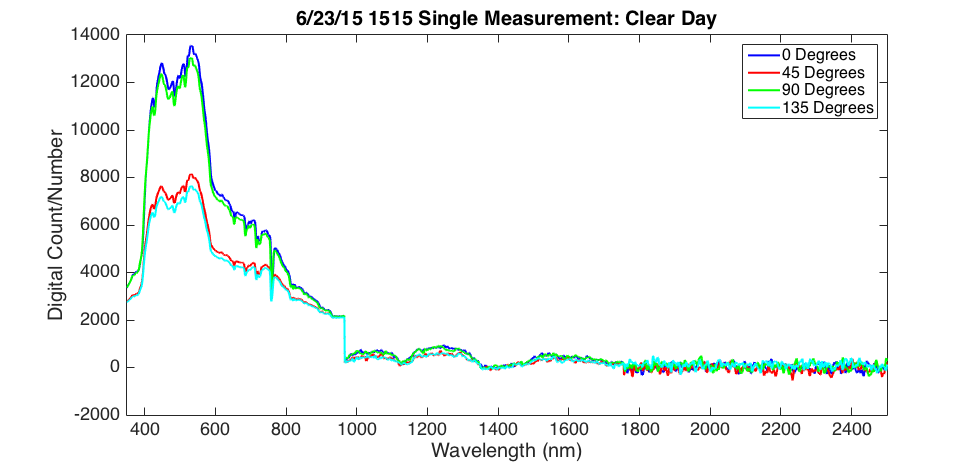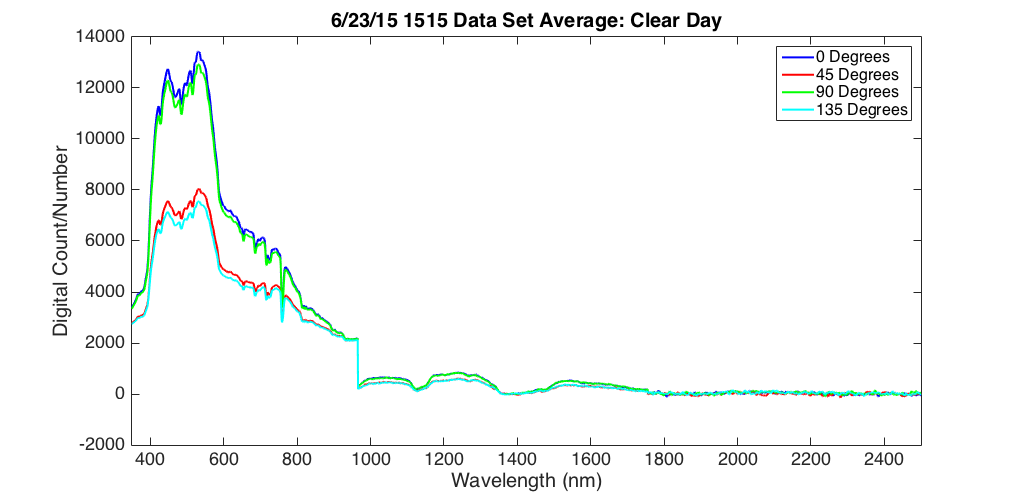Week 4 Log
June 22nd - June 26th
The Spectro-Polarimeter project has a few hold ups from the previous week, particularly regarding the challenge of detecting SWIR. However, this week I worked to solve this problem using a couple of methods.
First, I started taking successive measurements in two minute intervals. During the two minute intervals, I am able to obtain about 20 measurements. This will permit me to average the 20 different measurements together in hopes of canceling out noise that may be concealing the SWIR data.
A second method has been to make adjustments in the integration time and gain settings of the Spectro-Polarimeter and make comparisons in order to find the optimal settings.
The Spectro-Polarimeter is not able to detect light over the range of 350 nm to 2500 nm with a single detector. Consequently, within the instrument are three separate detectors as follows. A silicon photodiode detector covers the range of 350 nm to 1050 nm and two indium gallium arsenide detectors cover ranges of 900 nm to 1850 nm and 1700 nm to 2500 nm respectively.
 |
 |